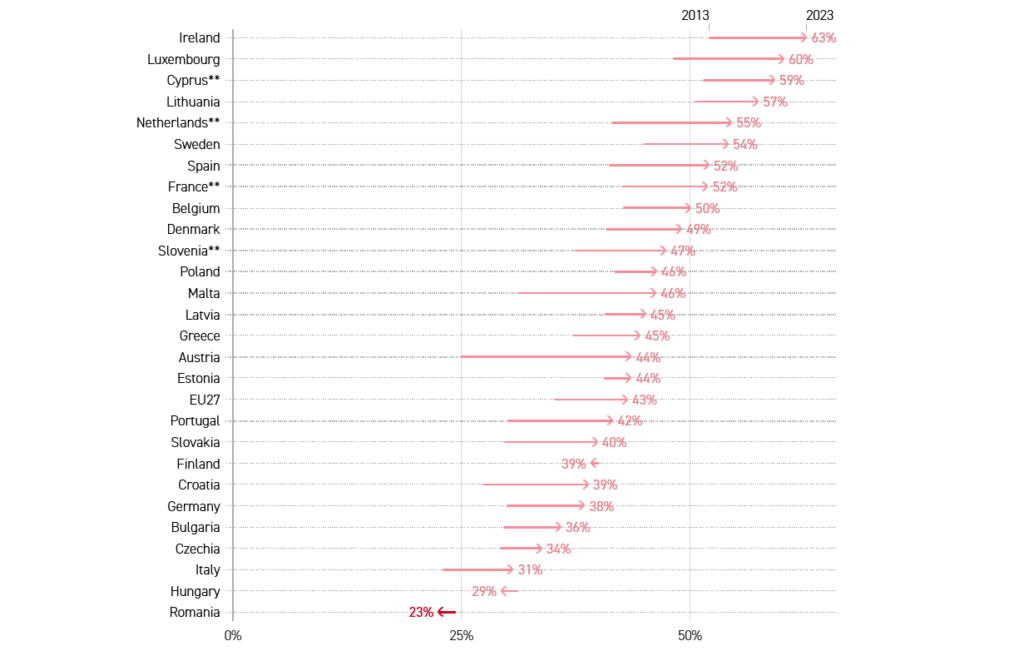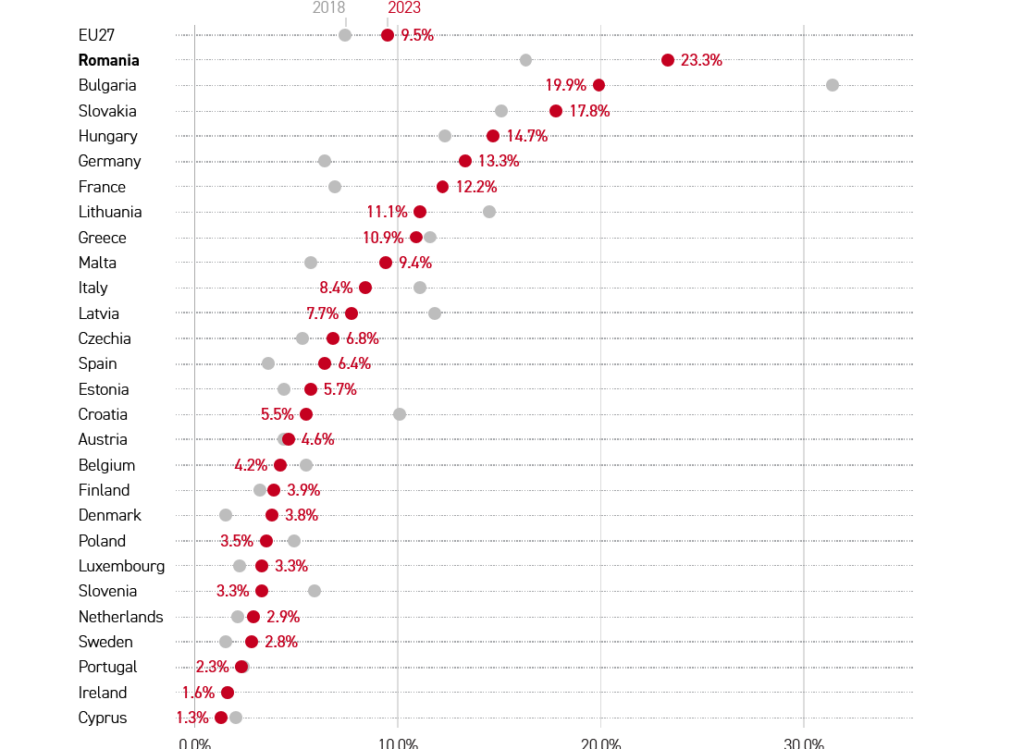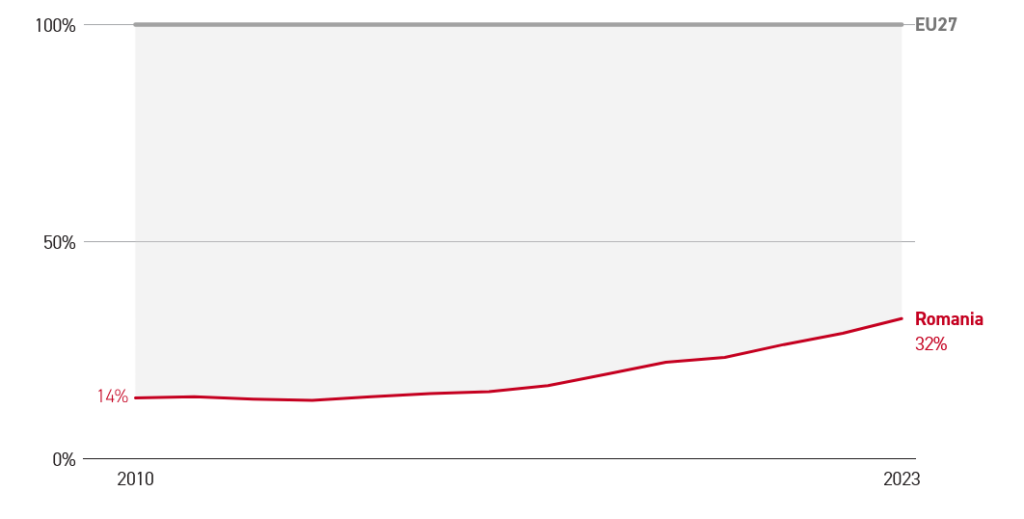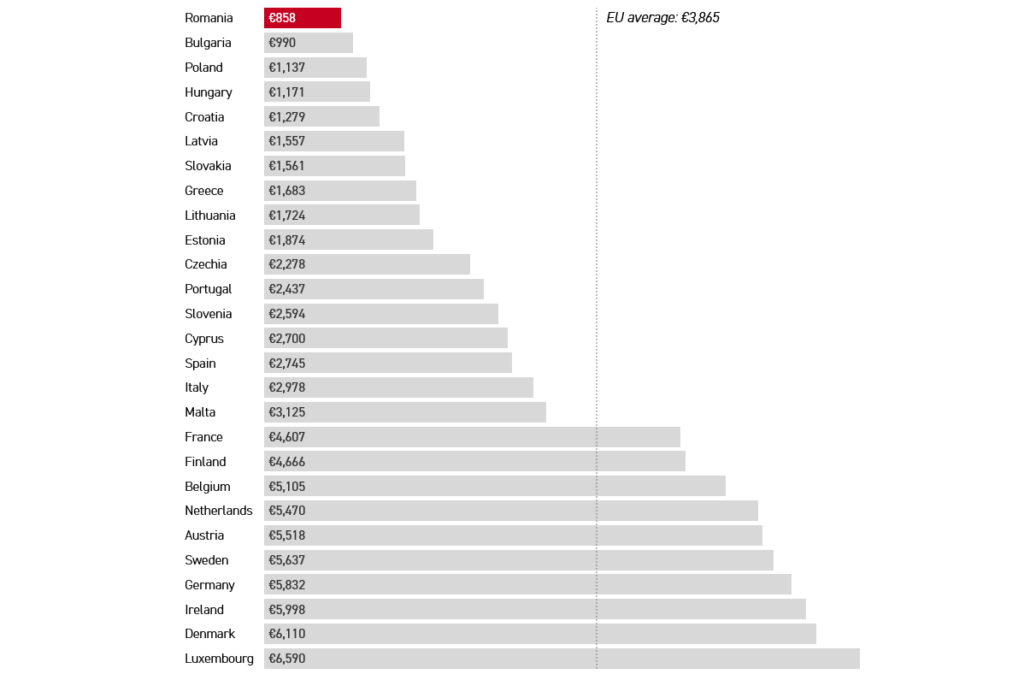There are several reasons why voters in Romania chose to vote for the far-right candidate Călin Georgescu in the first round of Sunday’s presidential elections, including a highly successful TikTok campaign and a sovereigntist rhetoric that resonated. But there is no doubt that Georgescu capitalized on a wave of anger against the situation in Romania.
And Romanians have reasons to be upset, writes Politico.
The country is facing a prolonged demographic decline, with millions of young people leaving in search of better-paying jobs abroad. Those who stayed are facing a cost of living crisis and the threat of absolute poverty, as well as deteriorating public services undermining trust in the system.
The publication analyzed the figures behind key issues influencing voters' concerns and politicians' programs in Romania and identified seven important reasons that led to the results in the first round.
- Brain Drain
Romania has been steadily losing its highly skilled workforce. Since the end of the communist regime in 1989, millions of people have left the country – an emigration wave further facilitated by Romania's accession to the EU. As a result of this and the low birth rate, the country's population has decreased by over four million between 1990 and 2023.
According to the World Bank, over two million people – nearly 20% of Romania's workforce - have sought better opportunities abroad in the last 10 to 15 years, and many of them never returned. "Romanian society has aged and has experienced one of the most severe brain drains globally," concluded the World Bank report.
- Gap between Education and Labor Market
As Romanians leaving the country tend to be more educated, companies in the country struggle to find qualified employees to fill vacant positions.
Romania has the lowest share of young people with university degrees in the EU. It also holds the unenviable record of having the highest proportion of NEETs - young people aged 15 to 29 who are not in education, employment, or training.
Issue of Higher Education in Romania
Percentage of individuals aged 25 to 34 with tertiary education in EU countries in 2013 and 2023

While Romania's unemployment rate is below the EU average, it masks the reality of a stagnant labor market.
Almost a third of the working-age population is economically inactive. Women, the poor, and individuals with lower education levels are more likely to remain outside the labor market or be engaged in the informal economy, with low wages and no social protection.
Romania also lags behind other EU states in terms of investments in educational programs and the labor market.
- Cost of Living
Like much of the EU, Romania has been facing a prolonged cost of living crisis, exacerbated by the pandemic and the war in Ukraine.
Food prices have risen due to supply chain disruptions and trade uncertainties, while energy bills have increased following Russia's invasion of Ukraine.
Consumer Price Growth
Inflation rates for all goods and food in Romania and the EU, with the year 2015 as the reference value of 100

Prices in Romania have risen faster than the EU average, and food is now over 50% more expensive than before the pandemic.
Healthy diets have become less affordable, and an increasing portion of the population reports being unable to afford nutritious meals.
Food Poverty
Percentage of the population who could not afford a meal with meat, poultry, or fish (or vegetarian equivalent) once every two days in 2019 and 2023

- Poverty and Inequality
Romania has made significant progress since joining the EU in 2007. Membership status has brought substantial benefits - including financial aid to narrow the gap with wealthier member states.
However, the country remains one of the poorest in the European bloc. In 2023, one-third of Romanians were at risk of poverty or social exclusion, and the average household income is still only a third of the EU average.
Household Incomes Compared
Net average equivalent household income in Romania as a share of the EU average, calculated in purchasing power standard

A broad set of reforms, including raising the minimum wage and pension system reform, has allowed Romania to make rapid progress in poverty reduction over the past decade. However, the social safety net is weaker than in most EU countries, leaving vulnerable groups – including Roma, the unemployed, and pensioners – particularly exposed to the risk of poverty.
- Bucharest Is Disconnected from the Rest of the Country
Romania has some of the poorest regions in the EU, but paradoxically, it has one of the wealthiest capitals in the European Union. Since the country's EU accession, Bucharest's economy has grown, with GDP per capita now surpassing that of Paris or Stockholm.
However, the 2023 analysis by the European Commission highlighted very large regional disparities. Challenges such as inadequate transport infrastructure, weak administrative capacity, and gaps in education and skills hinder efforts to reduce the gap with the EU and within the country.
- Healthcare System
Babies born in Romania in 2022 have a life expectancy of up to 77 years – five years less than the EU average of 82 years. Underfunded healthcare and inadequate investments in preventive care are crucial for the lower life expectancy rates that condemn the country's citizens to a shorter and less healthy life.
Healthcare Funding
Healthcare expenditures in euros per capita in 2022

Hospitals are crumbling and plagued by corruption, and the emphasis on inpatient care means little attention is given to preventing chronic diseases involving cardiovascular and respiratory conditions, the main causes of death in Romania, notes the publication.
- Corruption
In 2023, Romania ranked 63rd out of 180 countries in the Corruption Perceptions Index by Transparency International. Media reports and governmental analyses highlight "serious government corruption" and politicization at all levels of public administration.
It's no wonder that trust in Romania's political system is alarmingly low. According to a Eurobarometer survey published earlier this year, less than 30% of Romanians trust their government, while 69% trust the military.

